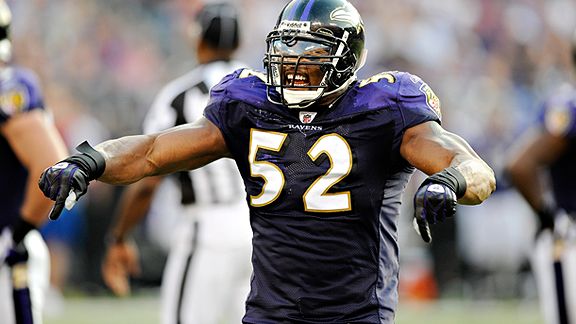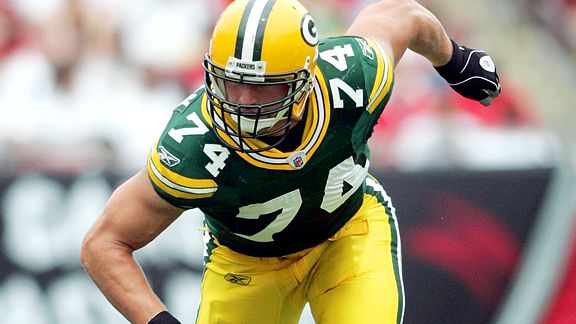Image may be NSFW.
Clik here to view.
All 2009 Fantasy Articles | 2009 Position Rankings
Defenses are tough to predict year to year, so fantasy owners are generally better off using their middle round picks to build depth at the skill positions. An emerging strategy is to utilize a Defensive Team By Committee (DTBC) approach, which involves drafting two late-round defenses whose schedules combine well. The idea is to get top 5 or top 10 DT performance at a much cheaper price.
Last year, we provided three recommended DTBCs: 1) SEA/BUF, 2) BUF/NO and 3) BUF/GB.
Seahawks/Bills was our top recommendation, and while the combo didn’t set the world on fire, they performed well. Under a high performance scoring system, the duo combined for 132 fantasy points over the first 16 weeks, which outscored all but the top 6 defenses in 2008. However, when we account for the bye week fill in by adding the average points per game of DT13-DT32 (5.4 per game), DT7 (Minnesota) would have also outscored the Seahawks/Bills combination. Still, getting DT8 performance with two late round picks is nothing to sneeze at. The duo also performed well in Week 15 (9 points) and Week 16 (14 points), when it mattered most.
Our second recommendation (and also the Footballguys’ recommendation, one of the first sites – if not the first – to outline this approach) was the Bills/Saints. Unfortunately, this combo did not perform well, posting 112 points over 16 weeks, mostly due to the Saints’ struggles. The duo would have finished the season as DT15, which is pretty bad considering that the Bills alone finished DT17.
Our final recommendation – Packers/Bills – posted 144 points, which would have been good for DT5 in 2008. This duo didn’t perform particularly well in the playoffs, scoring just 10 points over the last three games, but on the whole, this was a terrific DTBC last year.
Looking ahead to this season, Footballguys recommends a Cardinals/Packers combo, and while it certainly looks like a good one, we have another that we’d recommend first. FBG factors for home/away advantage/disadvantage, but they only go so far. Two years ago, we looked at home/away as it relates to DTBC, and found that middling defenses (ranked #6-#25) scored at a 31% better clip when playing at home. In the 2008 season, that number fell to 7%. This is a much smaller impact, but still significant.
Here’s our methodology:
1. Take FBG’s strength of schedule for DT9 through DT27.
We included the Bengals and Browns because our NFL guru, Anthony Stalter, is reasonably optimistic about the improvement those two defenses could show this year. We eliminated the top 8 defenses according to ADP – the Steelers, Ravens, Chargers, Bears, Jets, Giants, Vikings and Eagles – because they’re all going in the 12th round or earlier, and that’s just too soon to take a DT to be part of a committee.
2. Apply FBG’s defensive projections to SOS.
This yields a week-by-week projection for each defense.
3. Factor in home/away advantage/disadvantage.
Middling defenses play better at home. How much better? We don’t really know, but the number was 31% in 2007 and 7% in 2008, so we’re going with 7%. This will give a boost to DTBC combinations that have a majority of the games at home.
4. Run the numbers for the 171 combinations to find the top DTBC pairs.
Here the focus is not only which defenses have the best combined schedule, but also a real-world take on what kind of outlook the defenses in question have this season. For example, if the numbers show that a Team A/Team B combo is the best, but a Team A/Team C combo is comparable, and Team C has a better outlook for the season than Team B, we might recommend a Team A/Team C combo instead. That’s what we did last year (in recommending Seahawks/Bills instead of Saints/Bills since we were higher on the Seahawks than the Saints) and it worked out well.
So who came out on top?
Image may be NSFW.
Clik here to view.
Cowboys (DT12, 14.05) and Packers (DT13, 14.12)
The Cowboys were DT9 last year and have a similar schedule in 2009. They added defensive end Igor Olshansky and linebacker Keith Brooking in the offseason and used five of their first seven picks on the defensive side of the ball. Wade Phillips is a defensive-minded coach and always seems to get the most out of his guys. The Cowboys should be solid again this season.
Meanwhile, the Packers are switching from a 4-3 (and a rather pathetic 4-3 at that) to Dom Capers’ 3-4 scheme. The Packers were DT10 last year mostly because of their big play ability. (They scored 16+ points in four games.) They drafted B.J. Raji and Clay Matthews in the first round, and while Raji isn’t yet in camp, both players should have an impact this season. The key will be whether or not Aaron Kampman can adjust to OLB. They still have a strong secondary and a solid line, so if they can put together a pass rush and button up the run defense, they should be in for a strong year. It helps that they have a much easier schedule in 2009.
The Packers are the key to DTBC this season, as they are a part of 11 of the top 13 combinations. They combine well with the Jaguars, Raiders, Panthers, Bucs, Titans, Seahawks, Cardinals, Patriots, Dolphins and Redskins, so there are other options if you miss out on the Cowboys.
The Titans and Pats may already be gone, but Stalter is high on the Seahawks (undrafted), Dolphins (16.05) and Redskins (15.09) as defensive units that could take a big leap forward this season, and none of those teams will cost you much on draft day. He also thinks the Cards (14.05) will be a little better. FBG’s top recommendation (GB/ARI) came in 9th (150.4 fp) when we ran our numbers.
The other teams that combine well with the Cowboys are the Patriots, Bucs, Cardinals, Seahawks and the Titans. If you miss out on the Packers but land the Cowboys, the Cards, Seahawks and Bucs may be available in rounds 14-16. Stalter isn’t particularly high on the Bucs, who lost defensive genius Monte Kiffin.
The following table shows which weeks you should start which teams. Teams with an asterisk project to outscore the other team in the combo by less than a point, so as the season wears on, and it becomes clear that the other team is playing better defense and/or has a better matchup, you may want to call an audible and start them instead.
Image may be NSFW.
Clik here to view.
Finally, for those that aren’t comfortable with going with a DTBC – maybe your league has a small roster size and carrying two defenses for the entire year would be difficult – here are our official DT rankings, broken into tiers:
1. Baltimore
2. Pittsburgh
3. Philadelphia
4. San Diego
5. Chicago
6. Minnesota
7. Green Bay
8. Tennessee
9. New York Jets
10. New England
11. Dallas
12. New York Giants
13. Tampa Bay
14. Seattle
15. Arizona
16. Miami
17. Washington
18. Indianapolis
19. Buffalo
20. Jacksonville
21. Carolina
22. Oakland
23. Cleveland
24. Houston
25. Cincinnati
26. Atlanta
27. New Orleans
28. San Francisco
29. Denver
30. St. Louis
31. Detroit
32. Kansas City